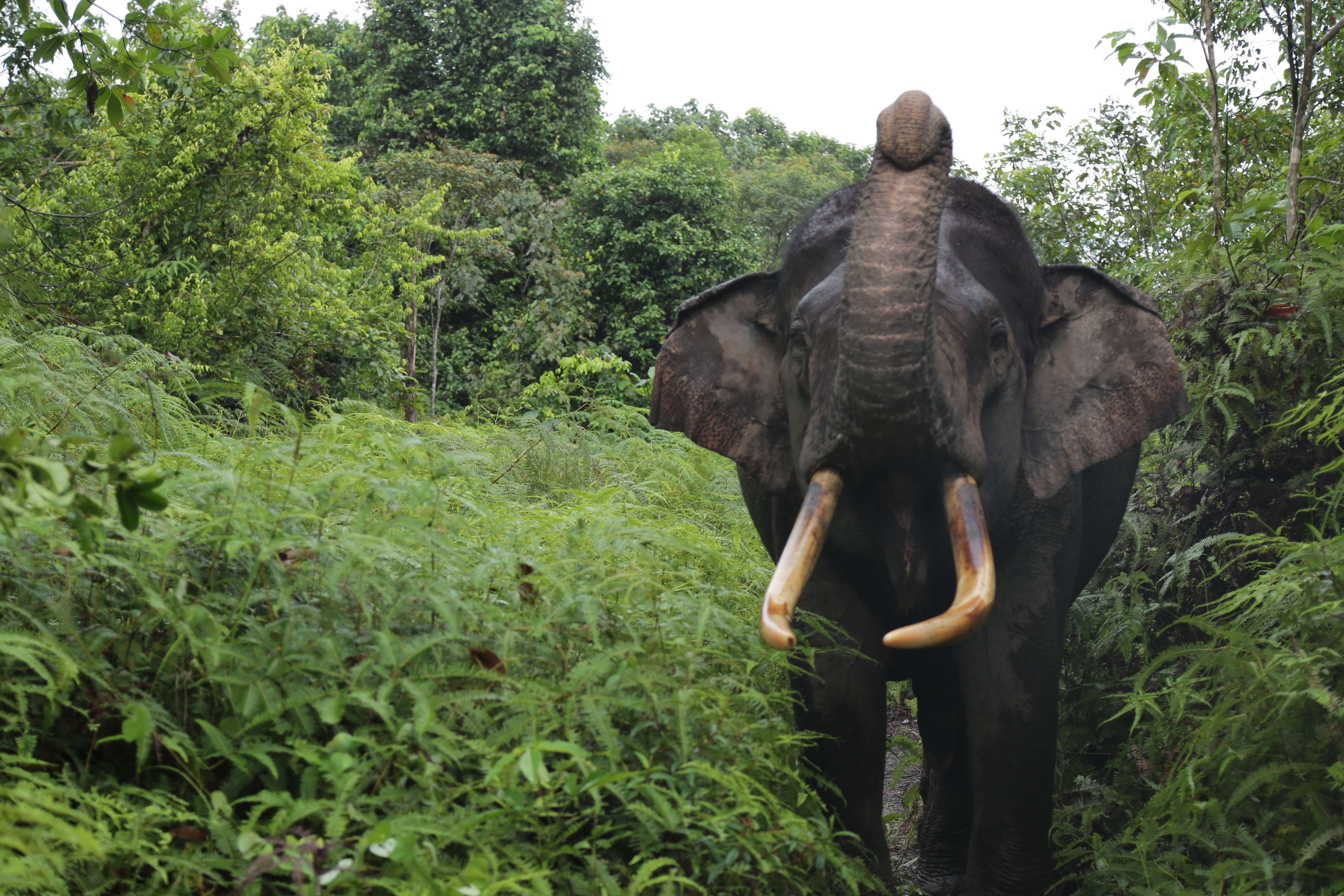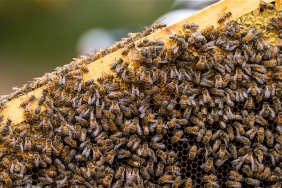EIGHT THINGS TO CONSIDER WHEN HERDING ELEPHANTS HOME
By: Nur Arinta
Sumatran elephant conservation efforts face many challenges. One of the major challenges in conservation efforts is habitat shrinkage. Forests are converted into plantations and settlements, making this wide-eared animal lose its home. Elephants, which have a strong memory of their home range, often enter plantations or settlements. This has led to conflicts between elephants and humans. These conflicts often cause many losses, ranging from material losses due to damage made by elephants, to the lives of elephants and humans.
Do you live in an area around elephant habitat? If yes, you need to read this article until the end to know how to handle elephant and human conflicts if they occur in your place.
One of the ways to deal with human-elephant conflict is to drive the elephants out of the forest and into residential areas or plantations. You can drive the elephants away together by using carbide cannons, torches and other sounds. This is the simplest and least costly method. The most effective time to evict elephants is in the morning from 8am to 10am or in the afternoon from 3pm to 6pm. In addition, you can also create booby traps using firecrackers set at known elephant entry points at a safe distance. Remember, don't hurt the elephants with the mercon!
Now, when carrying out elephant evictions, there are several things that need to be considered so as not to cause new problems. Here are the events!
1. Don't startle the elephant.1.
If you startle an elephant, you can't be sure where it will run to. The elephant may run towards the intruders or into a residential area. This will be very dangerous and can cause new and bigger problems.
2. Decide in which direction to lead the elephant.
Do not let the elephant be driven to the next settlement or to a plantation in an adjacent area. If this happens, it will add to the damage and conflict.
3. Avoid wild male elephants in heat.3.
Elephants do not specifically have a mating season, but the frequency usually peaks at the height of the rainy season. Male elephants in heat tend to exhibit raging and uncontrollable behavior. Signs of a male elephant in heat can be seen in the secretions of the temporal glands that melt on the cheeks, between the eyes and ears with a black color and stimulating smell. This behavior usually occurs once every three to five months for one to four weeks. It is best to avoid male elephants that appear to have this characteristic.
4. Keep a safe distance from elephants.
If an elephant runs after you, you can still dodge it or at least make sure there is a safety barrier such as a canal around you. The speed at which elephants walk and run far exceeds that of humans in the same terrain. If an elephant moves in pursuit, do not go into the open. Move to a place higher than the elephant's position.
5. Wear dark-colored clothing when repelling elephants.5.
Do not use brightly colored clothing such as red, yellow, or neon green. Instead, wear colors that blend in with your surroundings, such as gray, brown, or dark green.
6. Be careful when chasing elephants away.
If an elephant is sick, injured or wounded, keep an eye on it. Elephants tend to move with their calves or sick elephants, which are slower. It is best to evict them slowly without forcing them to leave quickly. Evicting by hurting or injuring elephants tends to make elephants aggressive, stressed, and attack humans.
7. Do not set snares to reduce elephant conflicts. 7.
Do not set snares in reducing elephant conflict. Elephants are intelligent animals and can break the snare on their leg. If the snare remains attached to the leg, the elephant will be in pain for a long time and will become aggressive as it tries to defend itself. This makes it more difficult to drive the elephant out of the plantation or settlement area. This also does not solve the conflict between elephants and humans because it injures the elephant, and can even cause the elephant to die from infection.
8. Pay attention to making plans to evict large groups of elephants.
In areas frequented by elephant groups, make an elephant eviction plan with all relevant parties so that coordination of evictions is effective. This is to ensure that the elephant group does not move to other plantations or settlements and cause new conflicts.
Well, those are all the things that need to be considered when conducting an elephant eviction. If you are evicting an elephant that has entered a residential area or plantation, make sure that the risks are minimized and that no one is injured or killed, be it a human or an elephant. Prevention is better than cure. That means, sharing space with wildlife such as elephants to prevent conflict is much better than ignoring elephant habitat until conflict occurs. But if the elephant has already entered the human area, do not kill the elephant, but evict the elephant properly and lead the elephant back to the forest.





